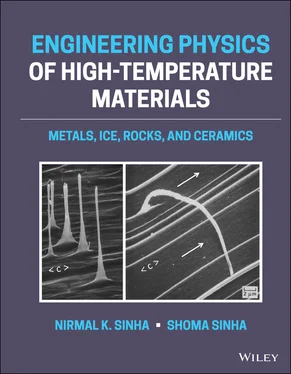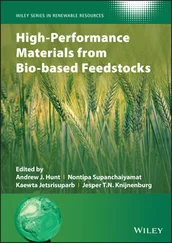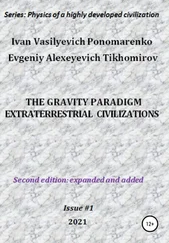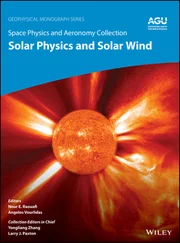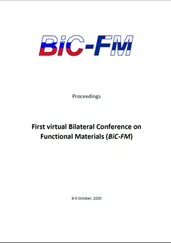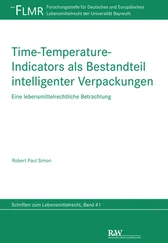Nirmal K. Sinha - Engineering Physics of High-Temperature Materials
Здесь есть возможность читать онлайн «Nirmal K. Sinha - Engineering Physics of High-Temperature Materials» — ознакомительный отрывок электронной книги совершенно бесплатно, а после прочтения отрывка купить полную версию. В некоторых случаях можно слушать аудио, скачать через торрент в формате fb2 и присутствует краткое содержание. Жанр: unrecognised, на английском языке. Описание произведения, (предисловие) а так же отзывы посетителей доступны на портале библиотеки ЛибКат.
- Название:Engineering Physics of High-Temperature Materials
- Автор:
- Жанр:
- Год:неизвестен
- ISBN:нет данных
- Рейтинг книги:3 / 5. Голосов: 1
-
Избранное:Добавить в избранное
- Отзывы:
-
Ваша оценка:
- 60
- 1
- 2
- 3
- 4
- 5
Engineering Physics of High-Temperature Materials: краткое содержание, описание и аннотация
Предлагаем к чтению аннотацию, описание, краткое содержание или предисловие (зависит от того, что написал сам автор книги «Engineering Physics of High-Temperature Materials»). Если вы не нашли необходимую информацию о книге — напишите в комментариях, мы постараемся отыскать её.
Discover a comprehensive exploration of high temperature materials written by leading materials scientists Engineering Physics of High-Temperature Materials: Metals, Ice, Rocks, and Ceramics
Engineering Physics of High-Temperature Materials (EPHTM)
Engineering Physics of High-Temperature Materials
Engineering Physics of High-Temperature Materials: Metals, Ice, Rocks, and Ceramics
Engineering Physics of High-Temperature Materials — читать онлайн ознакомительный отрывок
Ниже представлен текст книги, разбитый по страницам. Система сохранения места последней прочитанной страницы, позволяет с удобством читать онлайн бесплатно книгу «Engineering Physics of High-Temperature Materials», без необходимости каждый раз заново искать на чём Вы остановились. Поставьте закладку, и сможете в любой момент перейти на страницу, на которой закончили чтение.
Интервал:
Закладка:
1.3.1 Ice: A High‐Temperature Material
Geophysicists or solid‐earth scientists can only make educated guesses about what sort of molten rocks are in magma of the mantle, but glacier physicists, as declared by Weertman and Weertman (1975), know that the bulk of their glacial material is rather pure ice (consolidated snow) and its in situ thermal state. They can obtain samples by deep drilling for cores in glaciers, ice sheets, ice caps, and ice shelves and concurrently measure borehole temperature distribution. Rather sophisticated understanding of the flow of large ice masses was also developed primarily based on unconfined, uniaxial laboratory creep tests on glacial ice in wide ranges of stress and temperature (Liboutry 1965; Paterson 1994). Microstructural investigations were also carried out including the role of dislocation dynamics. Most importantly, ice was recognized as a high‐temperature polycrystalline material. The physics of glaciology encompassing the mechanics of glaciers, ice caps, etc. was formulated theoretically on experimental observations that polycrystalline ice obeyed power‐law creep (primarily dislocation creep) for secondary or steady‐state flow, experimentally obtained from the stress dependence of the minimum creep rate (mcr),  . Weertman and Weertman (1975) pointed out that glacier mechanics offered a paradigm for future progress in the understanding of deformation and flow in Earth's mantle. They suggested that the starting point for following the glaciological example was the determination of the creep properties, particularly, steady‐state flow of rocks at high temperatures. Accordingly, they reviewed a number of creep experiments carried out on various rocks. However, they pointed out great difficulties that exist in exactly following the path of the glaciologist due to uncertainty in the rock material in the mantle.
. Weertman and Weertman (1975) pointed out that glacier mechanics offered a paradigm for future progress in the understanding of deformation and flow in Earth's mantle. They suggested that the starting point for following the glaciological example was the determination of the creep properties, particularly, steady‐state flow of rocks at high temperatures. Accordingly, they reviewed a number of creep experiments carried out on various rocks. However, they pointed out great difficulties that exist in exactly following the path of the glaciologist due to uncertainty in the rock material in the mantle.
Even though the word glaciology truly stands for the study of ice in all its phases and conditions, sadly the subject of glaciology generally implies the study of glaciers. Popular dictionaries even define glaciology as “the study of the distribution, character, and effects of glaciers” (Simpson and Weiner 1989). This definition has certainly been expanded over the years to include large ice masses, such as ice sheets and ice shelves. Glaciological sciences are becoming increasingly important in the twenty‐first century with current international attention on climate change (popularized as “global warming”) and environment impacts due to increasing pollution of air and water bodies. Melting of glaciers, ice sheets, and ice shelves with concomitant rising of sea level, surface temperature of the oceans, and decrease in the extent of sea ice covers are some of the issues of importance. As such, the studies related to the physics of glaciers and ice are receiving a renewed interest. Accordingly, Paterson (1994) revised his original 1969 book (second edition in 1981) completely, “in order to keep pace with the extensive developments since the second edition was published.” No doubt, Paterson (1994) performed a formidable task, saying, “The vast expansion of the literature in recent years is making it increasingly difficult for one person to write a comprehensive account of the physics of glaciers.” The dictionary definition of “glaciology” has, however, remained unchanged; the physics and mechanics of ice has remained within the framework related to slow movements of large ice masses of glacial origin. The compaction of porous snow to nonpermeable ice and the long‐term flow of the mass in terms of secondary and tertiary stages of dislocation/diffusion creep over the range of stresses important in normal glacier flow (50–200 kPa or 5 × 10 −6E to 2 × 10 −5E, where E is the Young's modulus of ice) remained the focus (Paterson 1994).
Glaciologists devoted to understanding the long‐term response of glaciers or ice sheets and their environmental impacts, such as sea level rise, have had no requirements for understanding strength‐related mechanical properties of ice. However, ice–structure interactions (including off‐shore structures), bearing capacity of floating ice covers or winter roads used for transportation, building materials and roads subjected to freezing and thawing, permafrost‐related issues, etc. are some of the many ice engineering problems. In all of these types of ice engineering problems, knowledge of transient (primary) creep of ice and micromechanics of deformation, nucleation, and kinetics of cracking is essential. Naturally, ice engineers looked toward glaciological literature for their inputs. However, glaciologists were influenced by ideas developed for long‐term flow of glaciers on the basis of steady‐state flow. They concentrated their efforts toward the use of “mcr,”  of ice and its nonlinear stress dependency shown by Glen (1955). This concept was quickly adopted by ice engineers and popularized as Glen's law. However, the concept of steady‐state flow simply does not apply to any ice engineering problems because most of the ice engineering problems involve load durations of a few fractions of 1 s to a few minutes, or at the most a few hours. Engineering problems with ice involve not only short‐term deformation, but also cracking in a wide range of stresses, higher than 5 × 10 −5E and temperatures significantly higher than 0.9 T m. Unfortunately, ice mechanics/engineering societies were not made aware of the relevant power‐law creep model for metals, promoted by Norton (1929) outside of the Soviet Union, or the hyperbolic sine creep law of Nadai (1938). Sadly, even today ice science carries the emphasis of ice mechanics relevant to the flow of glaciers. Materials scientists and engineers still find it difficult to consider ice as an integral part of the world of high‐temperature materials.
of ice and its nonlinear stress dependency shown by Glen (1955). This concept was quickly adopted by ice engineers and popularized as Glen's law. However, the concept of steady‐state flow simply does not apply to any ice engineering problems because most of the ice engineering problems involve load durations of a few fractions of 1 s to a few minutes, or at the most a few hours. Engineering problems with ice involve not only short‐term deformation, but also cracking in a wide range of stresses, higher than 5 × 10 −5E and temperatures significantly higher than 0.9 T m. Unfortunately, ice mechanics/engineering societies were not made aware of the relevant power‐law creep model for metals, promoted by Norton (1929) outside of the Soviet Union, or the hyperbolic sine creep law of Nadai (1938). Sadly, even today ice science carries the emphasis of ice mechanics relevant to the flow of glaciers. Materials scientists and engineers still find it difficult to consider ice as an integral part of the world of high‐temperature materials.
Realizing the ice engineering issues, the senior author looked at materials science interconnected to very short‐term (early transient) creep of polycrystalline metals and alloys when he started his career in physics and mechanics of ice in 1975. He noticed that since the pioneering work of da Costa Andrade (1910) on steel, materials scientists paid only a “passing interest” in transient or the decreasing primary creep regime. Efforts were concentrated mainly on secondary, steady‐state, or strictly speaking minimum creep rate (Norton 1929; Nadai 1938; Glen 1955; Garofalo 1965; Odqvist 1974; Gittus 1975; Evans and Wilshire 1985; Cadek 1988; Nabarro and de Villiers 1995; Kassner 2015, etc.). However, creep failures either by fracture or necking depend on stress and temperature. Ruptures tend to occur near the end of the primary creep approaching the secondary stage and most certainly during the accelerating or tertiary regimes. Similar to the primary creep, historically, little attention has been paid to tertiary stages until recently. Yet, innumerable studies have been performed in characterizing the secondary creep or strictly speaking minimum creep rate, of various materials. To reduce effort and time, most studies are being performed at relatively high stresses to attain well‐defined minimum creep rates in reasonable lengths of time.
The European Creep Collaborative Committee (ECCC), an industry‐led group representing 16 member nations formed in 1992, has joined forces with key experts in Japan, North America, and around the world to coordinate data generation, collation, and assessment activities to provide the optimum basis for creep‐rupture strength values. On behalf of the Working Group 1 of the ECCC, Holdsworth et al. (2005) have tabulated a wide range of mathematical expressions based essentially on a few classical representations of primary, secondary, and tertiary creep, as well as creep strain equations adopted in assessment intercomparisons. None of the reviewed models seem to have addressed the effect of grain size on transient, secondary, or tertiary creep. The text misses the related and rather advanced stage of activities in high‐temperature physics and mechanics of polycrystalline ice, including nucleation and multiplication of grain‐facet‐sized intergranular cracks and crack‐enhanced creep and failure, carried out since the late 1970s. These concepts and their extension to complex aerospace alloys are presented in Chapters 5– 9.
Читать дальшеИнтервал:
Закладка:
Похожие книги на «Engineering Physics of High-Temperature Materials»
Представляем Вашему вниманию похожие книги на «Engineering Physics of High-Temperature Materials» списком для выбора. Мы отобрали схожую по названию и смыслу литературу в надежде предоставить читателям больше вариантов отыскать новые, интересные, ещё непрочитанные произведения.
Обсуждение, отзывы о книге «Engineering Physics of High-Temperature Materials» и просто собственные мнения читателей. Оставьте ваши комментарии, напишите, что Вы думаете о произведении, его смысле или главных героях. Укажите что конкретно понравилось, а что нет, и почему Вы так считаете.
